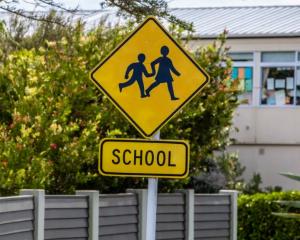Around two-thirds of people infected in New Zealand's Delta outbreak are younger than 30 and half come from the Pasifika community.
The new insights - which one Pacific health expert has called "depressingly familiar" - come as the outbreak swells to nearly 150 cases.
Ministry of Health data showed that, of 148 cases confirmed between August 17 and August 23, and which had been verified as not being linked to overseas travel, 47 were aged between 20 and 29.
A further 32 cases were aged between 10 and 19 and another 14 were aged under nine.
Of the remainder, 10 were in their 30s, another 13 were in their 40s, 19 were aged in their 50s, nine were in their 60s, three cases were in their 70s, and another single case was in their 80s.
The majority of 41 new cases announced today were household contacts of existing cases or people who had been at known locations of interest.
Director-general of health Dr Ashley Bloomfield said about 50 percent of cases in the outbreak were of Pacific ethnicity, largely as a result of the sub-cluster of about 58 cases linked to the Assembly of God Church (AOG) of Samoa in Mangere.
Bloomfield said he recognised concerns about Māori and Pasifika communities, given these groups often had higher rates of pre-existing health conditions.
Dr Debbie Ryan, of Pacific Perspectives, said reports that Pacific people accounted for more than half of the cases in the outbreak - yet just 7 percent of the population - were "depressingly familiar".
Pacific people made up nearly 60 percent of the community cases in the August 2020 Covid-19 outbreak, and more than 60 percent of the measles cases in the 2019 outbreak that affected more than 2000 children and young people.
"No doubt we will get through the current crisis. Pacific communities and health providers and health workers have again pulled together brilliantly to do what is required," Ryan said.
"But we need a circuit breaker to address these unacceptable disparities."
Bloomfield said health authorities and the Pasifika community were working together on contact tracing.
"We will make sure that we get rid of Covid in that community."
The second-largest sub-cluster was centred on Birkdale, on Auckland's North Shore, and had about 23 known cases.
More than 9000 contacts had been contacted and were self-isolating, while almost 900 frontline contact-tracers were working on the pandemic response.
The Ministry of Health has this afternoon released 10 new locations of interest, including the "Filipino Night" at Rosmini College and another bus route.
There are now 439 visits to 326 locations.
New locations include:
Filipino Night Rosmini College; Glassons Westfield Albany; Bus NX2 Stop 7089 Wellesley St East to Akoranga Station; Chemist Warehouse Albany; Bathroom Near JB HiFi Westfield Albany (multiple visits); Pandora Auckland CBD; Fatimas Commercial Bay Mall; 24/7 Breaktime Grafton; Bus NX1 Lower Britomart to Constellation Drive; Building 260 Room 115 OGGB Fisher and Paykel lecture theatre University of Auckland City Campus.
Earlier, Bloomfield said officials were already dealing with 10 times more contacts than there were during last August's outbreak.
The 41 new cases, of which 38 were in Auckland and the rest in Wellington, followed the 21 announced on Sunday and the 35 disclosed yesterday.
Bloomfield and Deputy Prime Minister Grant Robertson told reporters they expected more new active Covid-19 cases in days ahead, and it could be several days before case numbers peaked.
"We're not there yet," Robertson said.
Earlier today, Otago University epidemiologist Professor Michael Baker told the Herald that New Zealand could hope for a peak halfway through this week.
"We don't know how many cases we really started with when we went into lockdown and how many were incubating," Baker said.
"If you look at the likely incubation periods, there's a little bit of a delay with lockdown as people returned to their homes, developed symptoms and then infected people in their households.
"So we're still seeing that effect - and that should start to diminish now."
Baker said it would be useful to see the Government classify cases as those that were in the community before lockdown, those that had been detected while at home, and those that were among essential workers still operating under alert level 4 - data that Bloomfield said officials were in the process of providing.
"What we really want to know is if there are any unsuspected cases occurring in the community that don't have a connection to cases reported now, which could suggest some leakiness in lockdown," Baker said.
Delta spreading among essential workers was something that mired attempts to bring New South Wales under control, although Prime Minister Jacinda Ardern said there were no indications of that happening yet.
Baker's fellow Otago epidemiologist, Professor Nick Wilson, said New Zealand should have a "much better idea" of the outbreak by Friday, with tools like wastewater surveillance, community testing and genomic analysis informing the picture.












